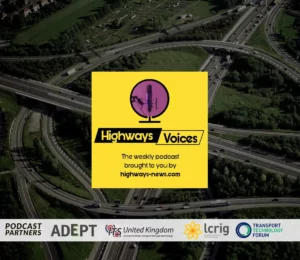Ordnance Survey (OS) has made a new suite of APIs will be available for the public sector to access and use for free to support their many projects.
With government transport policy committed to investing in thousands of miles of new road and rail infrastructure, location data will continue to play a key part in getting people moving around safely and more efficiently, helping to make roads less congested and enabling lower carbon transport, said the organisation.
Under the terms of the Geospatial Commission’s Public Sector Geospatial Agreement (PSGA), public sector developers and the private sector now have greater access and easier usability to OS’s premium geospatial data than ever before via the OS Data Hub.
These APIs will simplify and make it far easier to extract premium OS data for whichever project you are working on that would benefit from it.
Free at the point of use, the APIs are available via the OS Data Hub and provide a new way to access the most up-to-date OS data. The APIs will make it quicker and easier for users to work with OS data by connecting directly to a range of datasets as well as supplying the latest product updates on demand.
The APIs will help save time and resources allowing users to focus on using the accurate geospatial data to underpin decisions, gain insight, support public services and drive innovation. One significant benefit is a reduction in data management overheads removing the need to spend time downloading and managing data, according to OS.
The APIs provide access to a range of OS datasets including OS MasterMap, road network data, addressing information, 1:25 000 leisure mapping, as well as unlimited free access to OS OpenData products.
Chris Chambers, Head of the Public Sector Geospatial Agreement at OS, said: “Over the last 10 months we have seen location data play an important role in supporting the public sector’s response to Covid-19. The pandemic has highlighted how vital it is that high quality geospatial data is easily and quickly accessible to all users.
OS Product Manager Charley Glynn said: “We have made a range of new APIs available to help the public sector that would be particularly useful for transport and infrastructure work.
“So if you are trying to improve transport planning for buses or other public transport, then the OS Features API contains the OS MasterMap Highways network data for you to work with.
“Or if you’re interested in data visualisation then consider working with the OS Vector Tile API as it also contains the same highways data. Whatever product it is that you think would benefit from incorporating premium data, we’d love it for you to get in touch to see how we can help.”
Addording to OS, location data is already helping the transport and infrastructure sector and has played a hand at national and regional level. Nationally, location data supported in validating road classifications for roads funding, and helping in the route planning on new national road and rail projects. At a local level, data aided in improving route optimisation for buses, waste carts and gritters, minimising traffic disruption in cities, and giving local authorities greater understanding of assets in their area.
For many years now OS data has supported projects across the public sector that focused on improving transport and infrastructure.
In the City of London, OS data sets allowed planners to visualise the extent of works and impacts of road closures and utility excavations. Using this mapping tool meant disruptive works were calculated to a sub-metre level of accuracy, letting highways teams spot conflicts arising from works in the same area. It prevented gridlock on the streets in a location that requires 400 road closures, over 3,000 excavations and has about 70 building sites operating every year.
In Edinburgh, the city council used OS mapping products when beginning work to introduce a £2 million programme of 20mph speed limits in the capital. The city council created easy-to-understand visuals for a major public consultation. It let citizens of Edinburgh give their views alongside key stakeholders such as Lothian Buses and Police Scotland, and generated a response positive enough from the community for the scheme to be approved.
In Northumberland, the county council used OS MasterMap data to help optimise its routes for collecting garden waste. By analysing information such as turning restrictions and no-entry instructions, along with other location data, the council calculated the most efficient waste collections routes possible. It cut the number of miles vehicles had to travel by 1,700 miles a year, reduced the services annual costs by £200,000, and led to an increase in people recycling green waste.
More information on OS APIs can be seen at OS Data Hub.





















